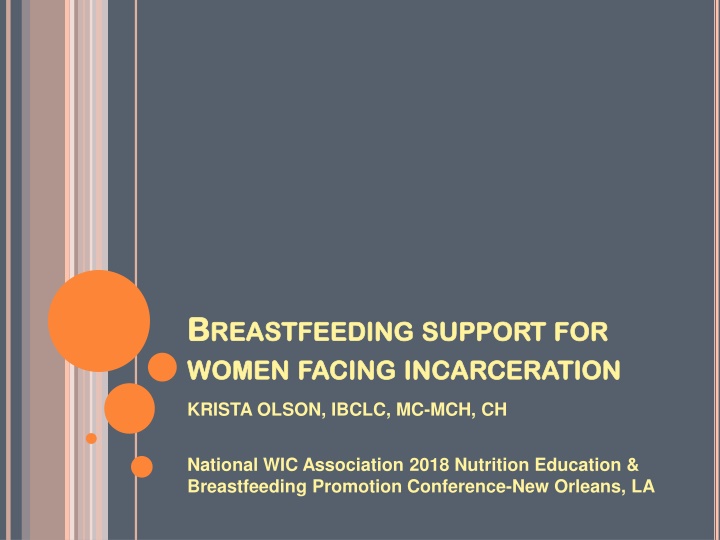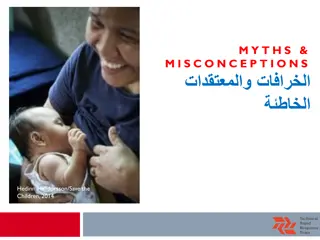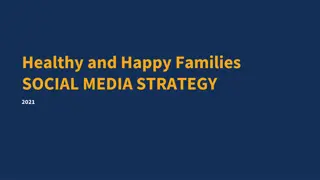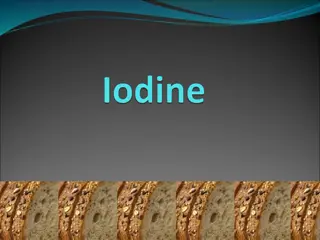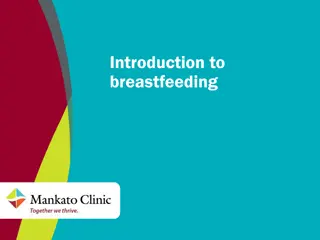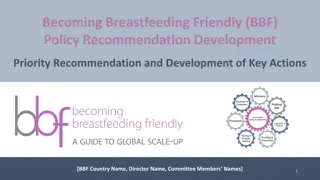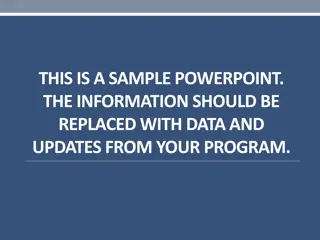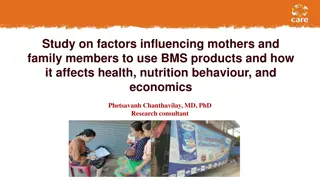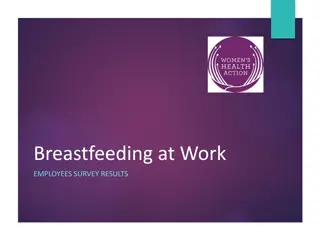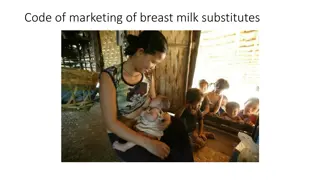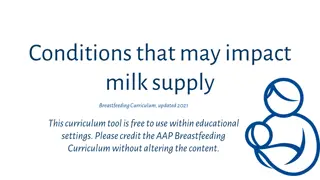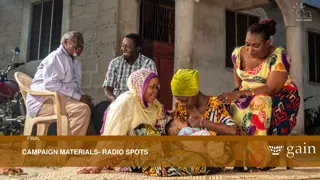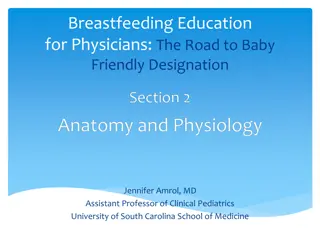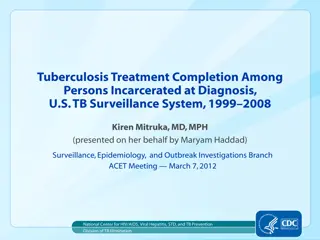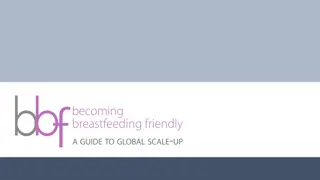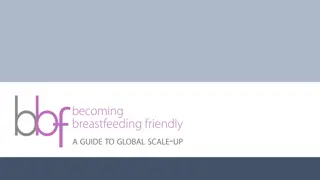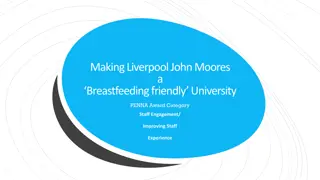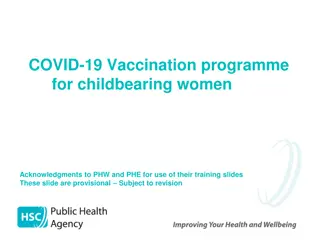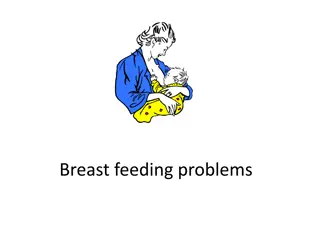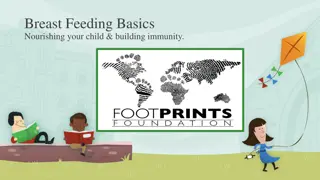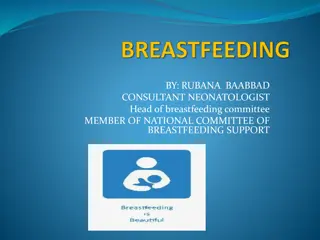Supporting Incarcerated Women in Breastfeeding
This content focuses on the importance of supporting breastfeeding among incarcerated women, highlighting the challenges they face and ways to advocate for optimal outcomes. It shares the journey of a family separated by incarceration and emphasizes the need for collaboration with professionals in the criminal justice system to create appropriate lactation care plans. The session objectives include identifying challenges, advocating for personalized outcomes, and collaborating with professionals to support breastfeeding in unlikely places. This work aims to create truly Baby Friendly Communities by overcoming obstacles faced by vulnerable mothers.
Download Presentation

Please find below an Image/Link to download the presentation.
The content on the website is provided AS IS for your information and personal use only. It may not be sold, licensed, or shared on other websites without obtaining consent from the author.If you encounter any issues during the download, it is possible that the publisher has removed the file from their server.
You are allowed to download the files provided on this website for personal or commercial use, subject to the condition that they are used lawfully. All files are the property of their respective owners.
The content on the website is provided AS IS for your information and personal use only. It may not be sold, licensed, or shared on other websites without obtaining consent from the author.
E N D
Presentation Transcript
B BREASTFEEDING REASTFEEDING SUPPORT WOMEN WOMEN FACING FACING INCARCERATION SUPPORT FOR INCARCERATION FOR KRISTA OLSON, IBCLC, MC-MCH, CH National WIC Association 2018 Nutrition Education & Breastfeeding Promotion Conference-New Orleans, LA
A ABOUT BOUT OUR ORGANIZATION ORGANIZATION, F OUR PROJECTS PROJECTS AND , FAMILY AMILY S SUPPORT AND ABOUT ABOUT OUR UPPORT H HAWAI OUR AWAI I I: Krista Olson, MC-MCH, IBCLC Early Head Start, Newborn Enhanced Support Team, First Foods for Island Families, First Connections Contact us: www.familysupporthawaii.org (808) 323-3303 ext. 2 kolson@familysupporthawaii.org Family Support Hawai i (FSH) is a community-based non-profit providing perinatal, early child- hood, & youth services in rural Hawai i County communities Disclosure: no relevant financial relationships to disclose.
MY BACKGROUND My experience in: --breastfeeding --WIC --the criminal justice system I now practice in a remote, rural setting in a community-based practice with other IBCLCs, Breastfeeding Peer Counselors, and early childhood educators
OUR JOURNEY TOGETHER TODAY While this is a story about the US criminal justice system and the thousands of women incarcerated there, at the same time, this is very much the story of one family separated by incarceration, and of the people who believed in them
S SESSION ESSION OBJECTIVES OBJECTIVES Objective #1: Identify challenges that breastfeeding women may encounter when incarcerated Objective #2: Explain how to advocate for optimal individualized outcomes for incarcerated mothers and children Objective #3: Describe ways to collaborate with professionals in the criminal justice system to create appropriate lactation care plans for mothers who are incarcerated
W WE E STRIVE STRIVE TO TO TO SUPPORT SUPPORT LACTATION TO EXTEND EXTEND B BABY LACTATION IN ABY F FRIENDLY RIENDLY PRACTICES IN UNLIKELY UNLIKELY PLACES PLACES PRACTICES To create truly Baby Friendly Communities, we must not overlook obstacles to breastfeeding encountered by women who find themselves mothering at the margins . When we extend our efforts to include those who are trying to make breastfeeding work despite tremendous obstacles such as homelessness, disability, vulnerable immigrant status, addiction, or incarceration, we are more apt to protect breastfeeding for our most vulnerable babies.
W WHAT HAT CAN MOTHERS MOTHERS IN CAN WE IN THE WE LEARN LEARN FROM THE CRIMINAL CRIMINAL JUSTICE FROM THE JUSTICE SYSTEM THE DATA DATA ABOUT SYSTEM? ? ABOUT Worldwide, the number of women and girls behind bars has doubled since the year 2000 There are currently more than 700,000 women imprisoned worldwide & more than a quarter of those are in the United States The number of women imprisoned in the US increased 646% between 1980 and 2010 25% of women who enter jails or prisons in the US are pregnant or have given birth within the past year The US is one of only a few countries that routinely separate incarcerated mothers from their babies (US Dept of Justice & Institute for Criminal Justice Policy Research)
R RACE ACE, , CLASS SYSTEM SYSTEM MIRROR CLASS & MIRROR MANY & SOCIAL SOCIAL DISPARITIES DISPARITIES IN MANY US US HEALTH IN THE THE CRIMINAL CRIMINAL INEQUITIES HEALTH INEQUITIES As a group, the lifetime risk of experiencing incarceration in the US is up to ten times greater for Black & Hispanic women than for White women Women who have experienced domestic or sexual violence have a 75% greater risk of incarceration The risk of incarceration is increased for women who are: --low income, --have fewer years of formal education, --live in the U.S. South, --have experienced trauma, or --have a parent who was incarcerated
A ADDRESSING DDRESSING LACTATION BY BY INCARCERATED INCARCERATED MOTHERS OPPORTUNITY OPPORTUNITY TO LACTATION CHALLENGES CHALLENGES FACED MOTHERS OFFERS OFFERS AN TO SUPPORT SUPPORT HEALTH HEALTH EQUITY FACED AN EQUITY Supporting incarcerated mothers offers another arena where breastfeeding can give the child a fairer start in life and compensate for the injustices of the world into which it was born, as stated so eloquently by UNICEF Director James P Grant regarding poverty
IN JAILS JAILS & COMMUNITY? ? & HOW HOW DOES DOES LACTATION PRISONS PRISONS IMPACT IMPACT THE LACTATION SUPPORT THE BROADER BROADER COMMUNITY SUPPORT IN Innovative responses to complex circumstances can have wider benefit for our communities (creative solutions to assure infants have access to breastmilk when incarcerated may be replicable in other circumstances of separation) Breastfeeding, attachment, and maternal efficacy so often go hand-in-hand that we cannot afford to ignore its protective role for families in crisis and involved in the criminal justice system Incarceration undermines breastfeeding most in communities already experiencing tremendous health disparities--it is truly a health equity issue
BREASTFEEDING BREASTFEEDING DURING LONG LONG- -TERM TERM PROTECTIONS PROTECTIONS TO DURING INCARCERATION INCARCERATION OFFERS TO BABIES BABIES AND OFFERS FAMILIES AND FAMILIES Breastfeeding plays a key role in reducing infant mortality, and children with mothers involved in the criminal justice system already face increased risk of dying before their first birthdays (McMillen Dowell, C., et al., Health and Justice 2018) Breastfeeding reduces the risk that a woman will return to prison by more than half. In one study, three-year recidivism rate for imprisoned women allowed to care for their infants was only 4 percent (Goshin, L. S., et al., Public Health Nursing, March 2014.)
W WOMEN OMEN FACE BREASTFEEDING BREASTFEEDING WHEN FACE NUMEROUS NUMEROUS CHALLENGES WHEN JAILED JAILED OR CHALLENGES TO OR IMPRISONED IMPRISONED TO I was charged with aggravated assault and ended up staying at the police station overnight, until my family could post the $125,000 bond. By that time, my breasts were so engorged with milk, the first thing I did was ask the bondsman if I could pump in his back room. Marissa Alexander (essence.com)
AS ADVOCACY ORGANIZATIONS COLLECT PARENTS STORIES, CHALLENGES AND SOLUTIONS EMERGE Graciela was sentenced to more than 50 days in a county jail for failing to complete community service. She had exclusively breastfed her three month-old daughter up until that time, and upon their abrupt separation, both mother and baby were in serious distress. Graciela was at risk for mastitis and losing her milk supply... Both Graciela and her husband had made numerous requests for lactation accommodation at the jail, to no avail. They were told that it was too hard for the Sheriff s Department to accommodate her lactation needs, either by pumping or allowing her to breastfeed her infant. After five days in jail, with the help of the ACLU, the County agreed to address the situation by sending her home to finish the remainder of her sentence on house arrest. --ACLU of California, 2016
C CLINICAL LINICAL COMPLICATIONS COMPLICATIONS DUE FROM FROM INFANT INFANT AT AT BIRTH DUE TO OR AT AT TIME TO SEPARATION SEPARATION TIME OF OF ARREST ARREST BIRTH OR Restricted access to milk removal may result in engorgement, plugged ducts, or mastitis Compromised milk supply Changes in mood and sleep patterns have been reported with abrupt weaning, and co-occurring mental health concerns may be exacerbated Methadone maintenance is not uncommon among incarcerated women whose infants may experience complications from abrupt weaning from breast milk Sudden disruption of breastfeeding may increase risk of unintended pregnancy among women reliant on lactational amenorrhea as primary contraception
A ADDITIONAL DDITIONAL FACTORS CARE CARE WHEN WHEN A A NURSING FACTORS THAT NURSING MOTHER THAT MAY MOTHER IS MAY COMPLICATE COMPLICATE IS JAILED JAILED History of substance use may raise concerns when a mom is incarcerated and wishes to provide milk for her infant Mothers who give birth while incarcerated may experience pressure to accept interventions that can undermine lactation, and are often separated from babies within 24 hours Infants may be in foster care or with an estranged family member unwilling to transport and feed expressed milk Providing pumped milk to a caregiver involves tremendous logistical challenges, in part because 60% of inmates in the US are held more than 100 miles away from their children
B BABY ABY E ERIKA BREASTFEEDING BREASTFEEDING WHILE RIKA: O : ONE NE FAMILY FAMILY S S JOURNEY WHILE IN IN THE THE US J JOURNEY TO US JUSTICE USTICE S SYSTEM TO PRESERVE PRESERVE YSTEM I am tremendously grateful to this brave family for their willingness to share their story in hopes of paving the way for other families to give their babies the precious gift of breastfeeding. A huge thank you to Sarah Price of EHS for being a tireless advocate for Erika and her family.
A AS S HEALTH HEALTH CARE ADVOCATE ADVOCATE FOR OUTCOMES OUTCOMES FOR CARE PROFESSIONALS PROFESSIONALS, , WE FOR OPTIMAL OPTIMAL BREASTFEEDING BREASTFEEDING FOR VULNERABLE VULNERABLE BABIES WE CAN CAN BABIES & & MOMS MOMS Improve pumping, milk storage and transfer in jails and prisons Educate colleagues in the criminal justice system about risks of not breastfeeding for babies and moms Advocate for sentencing alternatives that protect breast- feeding and bonding; such as community-based or deferred sentencing, addiction treatment, prison nurseries, and visitation Advocate in our communities for humane birth care for inmates
W WE E HAVE HAVE FOUND JUSTICE JUSTICE SYSTEM FOUND COLLEAGUES COLLEAGUES IN SYSTEM RECEPTIVE RECEPTIVE TO IN THE THE CRIMINAL CRIMINAL TO CLINICAL CLINICAL EXPERTISE EXPERTISE As in many sectors of society, breastfeeding is often simply not on the radar until issues are raised At sentencing and parole hearings, officials have shown serious consideration for letters from IBCLCs, MDs, WIC, and home visitation providers Good data showing recidivism is reduced by two- thirds when mothers and infants are kept together Advocacy in a single case can change policies impacting many families New York State, 1973: Kathleen Apgar sued local sheriff for removing son at birth and Supreme Court ruled in her favor, stating that a child s best interest includes the constant care and attention of its natural mother. New York State has the longest running prison nursery program in the US.
W WHEN HEN A A MOM LACTATION LACTATION CARE MOM FACES FACES INCARCERATION INCARCERATION, , CARE PLANS PLANS MAY MAY ADDRESS ADDRESS: : Establishing lactation when mom & infant will be separated soon after birth Protecting supply at arrest or time of imprisonment Suppressing lactation when appropriate to maternal circumstances Storage & transport of milk (model policy available at californiabreastfeeding.org)
C CONSIDERATIONS ONSIDERATIONS FOR LACTATION LACTATION MANAGEMENT MANAGEMENT IN FOR INDIVIDUALIZED INDIVIDUALIZED IN JAILS JAILS/ /PRISONS PRISONS Age of child at time of separation Maternal breastfeeding goals Length of separation Access to infant at visitation (type of contact allowed) Distance from facility to caregivers and milk storage options available Caregiver preferences, transportation and resources Substance use and medications Foster care and potential termination of parental rights under Federal Adoption & Safe Families Act
E ETHICAL THICAL CONSIDERATIONS CONSIDERATIONS IN LACTATION LACTATION FOR FOR MOMS IN SUPPORTING SUPPORTING FACING INCARCERATION INCARCERATION MOMS FACING In light of the risks of not breastfeeding for vulnerable mothers and babies, should lactation be viewed as a fundamental health right? Mothers give up many rights when incarcerated, but what about the rights of their infants?
O OUR UR ROLE ROLE AS AS EXPERTS EXPERTS IN IN THE THE FIELD FIELD OF OF LACTATION LACTATION Educate judges, attorneys, wardens, parole boards & prison health staff on the risks of not breastfeeding Provide clinical guidance to preserve breastfeeding whenever possible and safe for mother and baby Address/prevent complications of disrupted lactation Advocate for alternative sentencing options Educate ourselves about the growing crisis of incarceration for mothers and babies in the US and explore alternative approaches to addressing addiction and crime among women worldwide
CONSENSUS IS BUILDING IN SUPPORT OF PROTECTING LACTATION DURING INCARCERATION Given the benefits of breastfeeding to both the mother and the infant, incarcerated mothers wishing to breastfeed should be allowed to either breastfeed their infants or express milk for delivery to the infant. If the mother is to express her milk, accommodations should be made for freezing, storing, and transporting the milk. - American College of Obstetricians and Gynecologists Governmental and correctional authorities should strive to meet the legitimate needs of prisoner mothers and their infants, including a prisoner s desire to breastfeed her child. - American Bar Association Standard 23-6 9c, 2011
CHANGE IS POSSIBLE FOR PRISONERS AND THEIR BABIES THROUGH ADVOCACY AT THE LOCAL, STATE, AND NATIONAL LEVELS In New Mexico in 2017, a judge ruled that mothers incarcerated in state prisons have a fundamental and protected right to breastfeed their infants under the state Constitution The ruling came in response to a lawsuit filed by Monique Hidalgo, a woman with opioid- use disorder who gave birth while in the New Mexico State prison system photo credit: New Mexico Dept of Corrections, via Huffington Post
AS THE COMPLEX STORIES OF PARENTS IN OUR BURGEONING PRISON SYSTEM UNFOLD, WE WILL NEED TO CONTINUALLY EVOLVE OUR WORK TO SUPPORT FAMILIES For Monique Hidalgo in New Mexico, the path to breastfeeding while incarcerated has been complicated by opioid use leading to further disruption in breastfeeding and highlighting the complexities of the opioid crisis For breastfeeding freedom in New Mexico, where the Legislature passed a bill to protect breastfeeding for prisoners in 2017, the path was complicated by a veto by the Governor, highlighting the long road ahead toward protecting lactation for all families
BREASTFEEDING CAN BE A SOURCE OF STRENGTH, CONNECTION AND PRIDE FOR FAMILIES NAVIGATING THE CRIMINAL JUSTICE SYSTEM Overcoming hurdles in order to provide any amount of breastmilk can have tremendous impact WIC staff can be key champions for struggling families separated by imprisonment/detention It is never too late to make a difference for families who struggle
R REFERENCES EFERENCES: : American College of Obstetricians and Gynecologists. (2012, Aug). Committee Opinion on Reproductive Health Care for Incarcerated Women and Adolescent Females. 535:4. Byrne MW, Goshin LS, Joestl SS. (2010). Intergenerational transmission of attachment for infants raised in a prison nursery. Attachment & Human Development, 12:375 393. Chicago Alliance to Free Marissa Alexander. (2014). Panel on Breastfeeding and Incarceration. Retrieved from chicagofreemarissa.wordpress.com Clarke J, Adashi Y. (2011, Mar 2). Perinatal care for incarcerated patients: a 25-year-old woman pregnant in jail. Journal of the American Medical Association, 305(9):923-9. Cole, M. (2012). Lactation after Perinatal, Neonatal, or Infant Loss. Clinical Lactation. 3(3). Dumont D, Wildeman C, Hedwig L, Gjelsvik A, Valera P, Clarke J. (2014, Nov). Incarceration, Maternal Hardship, and Perinatal Health Behaviors. Maternal Child Health Journal, 18(9):2179-2187. Glaze L, Maruschak L. (2008, Aug). Parents in prison and their minor children. Bureau of Justice Statistics Special Report. 1 25. (NCJ 22984), Retrieved from http://bjs.ojp.usdoj.gov/content/pub/pdf/pptmc.pdf. Goodman M, Dawson R Burlingame P. (2016 Jan). Reproductive Health Behind Bars in California. A Report from the ACLU of California. Goshin LS. et al., (2014, Mar/Apr) Recidivism After Release from a Prison Nursery Program. Public Health Nursing, 31(2): 109-117. Huang, K, Atlas, R, and Parvez, F. (2012). The Significance of Breastfeeding to Incarcerated Pregnant Women: An Exploratory Study. Birth, 39: 145 155. McMillen Dowell C, (2018 Dec) et al.,Maternal Incarceration, Child Protection, and Infant Mortality. Health Justice. 6(2). National Women s Law Center and The Rebecca Project. (2010) Mother s Behind Bars: a state-by-state report card and analysis of federal policies on conditions of confinement for pregnant and parenting women and the effect on their children. Prison Legal News (2014) NV DOC - Breast Pumping Program, Ad. Reg. 657, 2014 retrieved from https://www.prisonlegalnews.org/news/publications/breast-pumping-program-ad-reg-657-nv-doc-2014 Prison Legal News. (2016, Mar). Guidelines issued safeguard rights of pregnant Canadian prisoners and their children. Retrieved from https://www.prisonlegalnews.org/news/2016/mar/1/guidelines-issued-safeguard-rights-pregnant- canadian-prisoners-and-their-children/ Sutherland MA. (2013 Jun-Jul.) Incarceration during pregnancy: implications for women, newborns and health care providers. Nursing for Women s Health, 17(3):225-30. United Nations Office on Drugs & Crime-WHO Europe. (2009) Women s Health in Prison: Correcting Gender Inequity in Prison Health. Retrieved from www.euro.who.int/__data/assets/pdf_file/0004/76513/E92347.pdf Van den Bergh, B, Gatherer, A, Moller L. (2009, Jun). Women s health in prison: urgent need for improvement in gender equity and social justice. Bulletin of the World Health Organization, 87(6): 406.
